NHT welcomes guest contributor Sasha Miller.
A budding writer interested in sustainable travel, Sasha explores Malaysia’s state of Sabah in northern Borneo.
On my first night in Kota Kinabalu, I attended the Borneo Eco Film Festival. A program sponsored by government and business, it screened short films by local students who portrayed their stories and concerns for the environment. Over the next two weeks as I travelled in Sabah, a Malaysian state of Borneo, I began to see the film festival as a symbol of the region’s growing tourism industry and its associated visibility in the global spotlight. The importance of preserving the unique flora and fauna of Sabah is being realised, not only for the sake of the environment but also to preserve tourist attractions. Sustainability, a concept that is yet to gain a foothold in Sabah, would ensure the wild nature that attracts adventurers to Sabah will continue to be enjoyed.
Malaysian Borneo is divided into two states, Sabah in the East and Sarawak in the West. Kota Kinabalu, the capital of Sabah, is a business and tourism focused city, but is just a town compared to Kuala Lumpur in mainland Malaysia. With a small airport serviced by Air Asia, most visitors arrive in Sabah through Kota Kinabalu. The relative modernity of the city serves as an introduction to current day Sabah.
You won’t find skyscrapers, but there are still the conveniences of shopping centres, consulates and accommodation and cuisine that range from budget to luxury. Kota Kinabalu is noticeably less touristic and less influenced by the Western world than its South-East Asian neighbours. Like many Asian cities however, it is a town of contradictions. Five star hotels service the bustling business and tourism industries, while a few hundred metres out of the city centre is a vast slum, dirty home to the poorest locals. Likewise, walking along the main street, Jalan Gaya, is to have your tastebuds tingling with the enticing aroma of curry and warm roti at one corner, only to meet a nasal assault at the next: a rotting bird squashed in the street, or a dank pool of water in the gutter.
Kota Kinabalu is home to many attractions and friendly locals. Single-day activities include seeing the endearingly ugly noses of the proboscis monkeys at the zoo, or taking a short boat trip to the pretty islands, where you can snorkel or spot giant monitor lizards sun-baking on the rocks. Kinabalu National Park is also close by and many visit Sabah with the goal of reaching the peak of Mount Kinabalu, the highest mountain in South-East Asia. However, no trip to Sabah is complete without venturing out of the capital. There are a myriad of interesting places dotted across the state: get up close to rescued orangutans in Sepilok, dive the famous Sipadan coral reef or stay in a jungle camp at Kinabatangan.
From Kota Kinabalu it’s a short four-hour bus trip through the Kinabalu National Park to Sandakan on the eastern coast. Here, stay at one of the resorts within a five minute walk to the Sepilok Orang Utan Rehabilitation Centre, which houses orangutans who have lost their homes due to deforestation. There are no cages, so you can’t cuddle a baby animal, and this enhances the amazing work done by the centre in providing an authentic experience for both the orangutans and their admirers. The creatures are so like humans that I was reminded of my childhood playing on the monkey bars, and left with heartfelt empathy.
My next stop, also in the region of Sandakan, was a camp resort in the jungle near Kinabatangan. It was run by an eco-conscious tourism company called MESCOT. They offer two-night packages with accommodation in a comfortable, private wooden bungalow. With the included boat trips and short jungle hikes we had the chance to see monkeys including the unique proboscis monkey, crocodiles, butterflies and even a rare, tiny western tarsier. If you’re lucky you can spot wild orangutans or witness the local herd of elephants crossing the river, which they do about six times each year.
Just another few hours south you’ll find some of the best snorkelling and diving of anywhere in the world: Sipadan coral reef. The reef is accessed through the coastal town of Semporna, and visitors can choose to stay here or out on the islands. The mainland is more affordable but this is a case of getting what you pay for. While the islands are beautiful, Semporna is dirty and run-down. Large piles of rotting rubbish mark the closest thing to waste disposal, and these are littered throughout the town including next to the ferry wharf and the bus depot, providing an unlikely welcome. Those who stay in Semporna have a nice selection of accommodation, restaurants and dive shops and can reach the reefs with a short boat ride. However, if budget allows, stay on one of the islands, where you can enjoy clean beaches from dawn ’til dusk.
Borneo’s ecological issues are well known globally, in particular, the country’s huge production of palm oil and associated plight of its orangutan population. The country’s natural resources and tourist attractions are benefitting often foreign companies while many of the native population live in poverty and even in slums. Some resorts will not serve seafood (the main source of income for local families) because it is not sustainably fished. This is an admirable motive but it points to another issue – the need to educate locals on sustainable farming, which is also evident in the running of the palm oil plantations.
Sabah is an ideal travel destination for outdoor adventurers, nature lovers and those who want South-East Asian culture without the hoards of tourists. It’s not immune to Western influence by any means, as evident in the Harry Potter films showing on the buses and the MacDonald’s and Starbucks present in each city.
But much of Sabah is still wildly untamed. Tangled jungle vines threaten to grow right into the windows of houses, Mount Kinabalu presents a challenge to serious mountaineers and the turtles, whale sharks and multitudes of fish at Sipadan will gratify divers and snorkellers of all levels. Sabah is not a destination for the faint-hearted, and that’s what you’ll love about it.
To read more of Sasha Miller’s stories see: www.sashajmiller.wordpress.com or tweets from @sasha_miller.
Naked Facts:
Air Asia flies to Kota Kinabalu from Kuala Lumpur.
Domestic bus travel can be organised through your hotel upon arrival.
Information about the Kinabatangan jungle camp can be found at
www.mescot.org

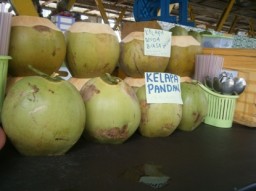
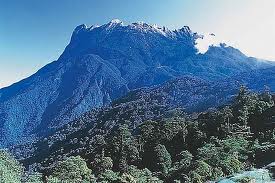
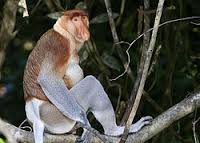
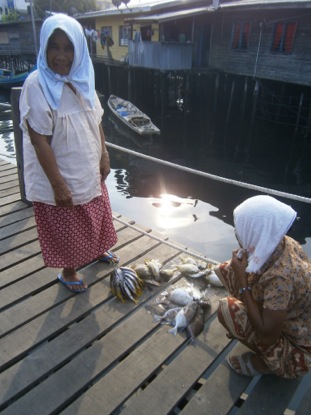
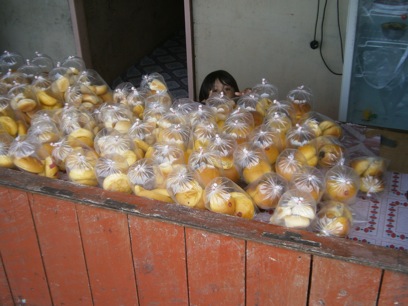
[…] http://nakedhungrytraveller.com.au/of-monkeys-and-men-the-wild-nature-of-sabah/ […]